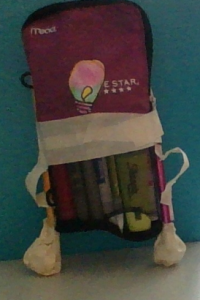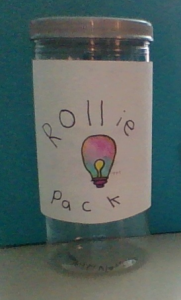Do you have a super heavy backpack and do you ever get tired of lugging it around? For a school project, we had to create an invention that help or entertain others. Our invention was backpack to help with posture and to solve that problem of super heavy backpacks. call it The Rollie Pack. The Rollie Pack is a backpack with wheels that extend down to the ground to help support the weight from your backpack.
The design process is a series of steps taken to create a product or invention. The design process we used was to Empathize, Define the Problem, Ideate, Patent, Prototype and Test, Product and Packaging Design, Market and Share our product.
First, we found the problem. We found that backpacks are getting too heavy and we wanted to solve that problem. To ideate a solution, we thought about what could we do or add to a normal backpack to make the backpack lighter and easier to use. We decided we could have a backpack with wheels that extend down from the backpack from a standing position adding support and to aide the user in carrying the backpack. When we patented our idea, to do this we searched for patents similar to ours. Since there were not any patents similar to ours, we sent a patent application to the teacher which she approved. Next, we designed our backpack and logo by drawing them on paper. After we designed our idea, we tested our product by asking our classmates if our prototype would be useful to them and what they would add to it. We decided to remove the weight sensor that was original in our design after hearing people didn’t want one. After we tested, we made our product and packaging.  We made our product miniature version of the backpack by using a pencil case. We then designed our packaging.
We made our product miniature version of the backpack by using a pencil case. We then designed our packaging. We used an old pretzels container and decorated it with our logo and information about the Rollie Pack. Finally, we made a marketing video/ infomercial to try and sell our product.
We used an old pretzels container and decorated it with our logo and information about the Rollie Pack. Finally, we made a marketing video/ infomercial to try and sell our product.
In conclusion, we used the design process Empathize, Define the Problem, Ideate, Patent, Prototype and Test, Product and Packaging Design, Market and Share our product to create our invention and advertise our product. After doing so, we had our product, The Rollie Pack.








